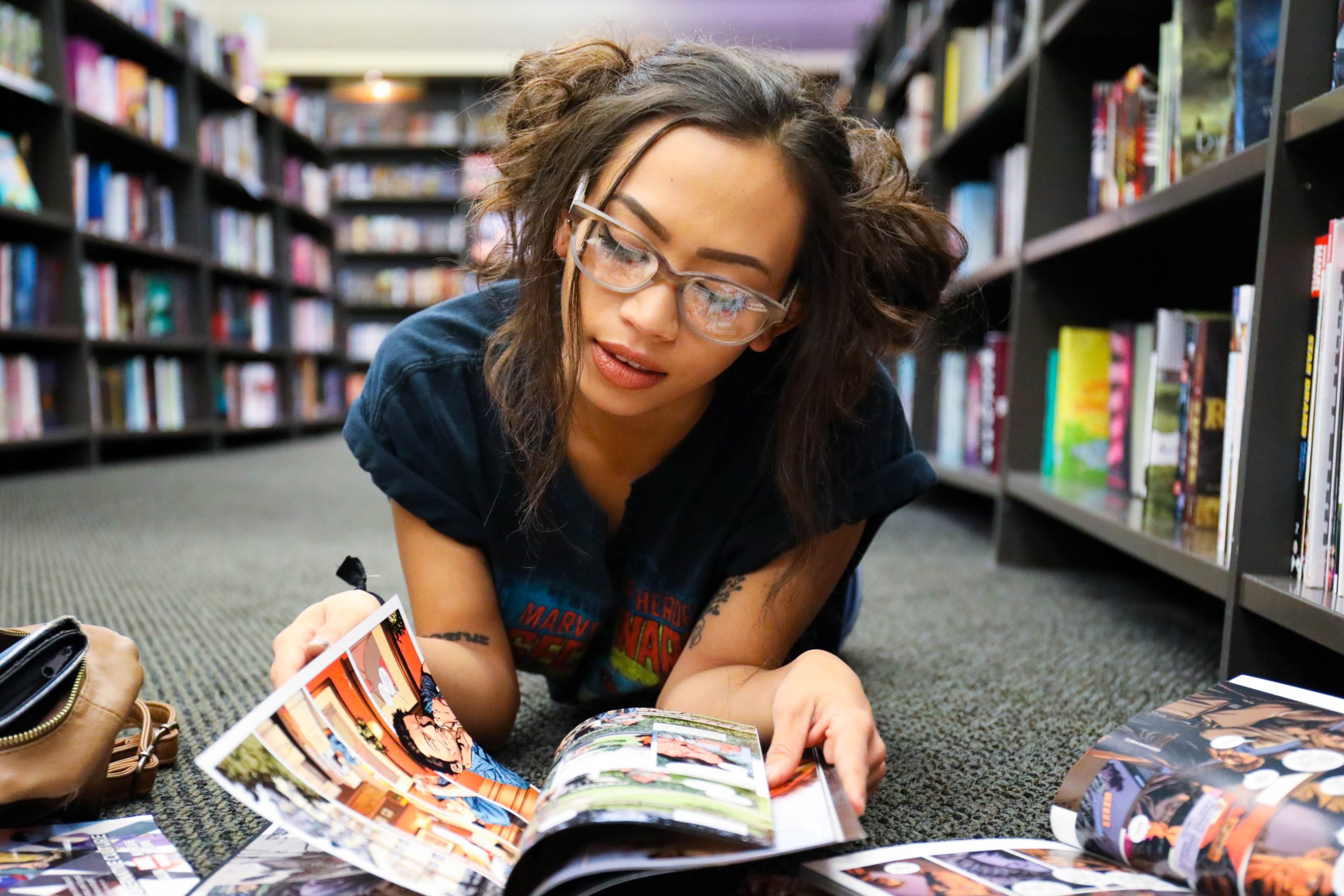Collection Overview
Working with comics and graphic novels in the ELA classroom

In this collection are four different windows into the use of comics and graphic novels in ELA classrooms. Although the students, purposes, and lessons are different, all the teachers share an interest in helping students see the relationship of story, word, and image in such a way that the notion of ‘text’ is expanded to include the multimodal experience of understanding through word and image both.
In “Critical Pictures,” teacher Mitch Nobis seeks to move his word-focused high school juniors into a new understanding of multimodal text. In “Writing With Pictures,” Nick Kremer wants his students to better understand the genre features of comics. Dave Boardman wants to push those conventions a little further and show how sequential graphics can be “Serious Comics,” while Bee Foster wants her students to work at “Redefining Text” more generally.
More readings are available if you wish to take a deeper dive:
- Baetens, J. and Frey, H. (2014). The graphic novel: An introduction. Cambridge: Cambridge University Press
- Behler, A. (2006). Getting started with graphic novels: A guide for the beginner. Reference & User Services Quarterly, 46(2), 16-21.
- Carter, J. B. (2008). Comics, the Canon, and the Classroom. In N. Frey, & D. Fisher (Eds.), Teaching visual literacy: Using comic books, graphic novels, anime, cartoons, and more to develop comprehension and thinking skills (pp. 47-60). Thousand Oaks, CA: Corwin Press.
- Carter, J. B. (2009). Going Graphic. Educational Leadership, 68-72.
- Carter, J. B. (2007). Transforming English with Graphic Novels: Moving toward Our “Optimus Prime”. The English Journal, 97(2), 49-53.
- Chun, C. W. (2009). Critical Literacies and Graphic Novels for English-Language Learners: Teaching Maus. Journal of Adolescent & Adult Literacy, 53(2), 144-153.
- Cummins, J., Brown, K., & Sayers, D. (2007). Literacy, technology, and diversity: Teaching for success in changing times. Boston: Pearson.
- Gillenwater, C. (2009). Lost Literacy: How Graphic Novels Can Recover Visual Literacy in the Literacy Classroom. Afterimage, 37(2), 33-36.
- Griffith, P. E. (2010). Graphic Novels in the Secondary Classroom and School Libraries.Journal of Adolescent & Adult Literacy, 54(3), 181-189.
- Hughes, J. M., King, A., Perkins, P., & Fuke, V. (2011). Adolescents and “Autobiographies”: Reading and Writing Coming-of-Age Graphic Novels. Journal of Adolescent & Adult LIteracy, 54(8), 601-612.
- Kirtley, Susan E., Antero Garcia, and Peter E. Carlson, eds. With Great Power Comes Great Pedagogy: Teaching, Learning, and Comics, University of Mississippi Press, 2020.
- Kluth, P. (2008). “It Was Always the Pictures…”. In N. Frey, & D. Fisher (Eds.), Teaching visual literacy: Using comic books, graphic novels, anime, cartoons, and more to develop comprehension and thinking skills (pp. 169-188). Thousand Oaks, CA: Corwin Press.
- McClanahan, B. and Nottingham, M. “A Suite of Strategies for Navigating Graphic Novels: A Dual Coding Approach” in The Reading Teacher, 04 March 2019. https://doi.org/10.1002/trtr.1797
- McTaggert, J. (2008). Graphic Novels: The Good, The Bad, and the Ugly. In N. Frey, & D. Fisher (Eds.), Teaching visual literacy: Using comic books, graphic novels, anime, cartoons, and more to develop comprehension and thinking skills (pp. 27-46). Thousand Oaks, CA: Corwin Press.
- Moeller, R. A. (2011). “Aren’t These Boy Books?”: High School Students’ Reading of Gender in Graphic Novels. Journal of Adolescent & Adult Literacy, 54(7), 476-484.
- Monnin, K. (2010). Teaching graphic novels: Practical strategies for the secondary ELA classroom. Gainesville, FL: Maupin House Pub.
- Wallace, C. (2001). Critical literacy in the second language classroom: Power and Control. In Negotiating critical literacies in classrooms (pp. 209-228). Mahwah, NJ: Erlbaum.

